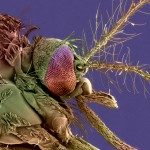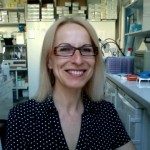Link to Pubmed [PMID] – 12486524
J. Mol. Evol. 2002 Dec;55(6):653-63
Isoenzyme variation was assessed in 79 mosquito samples of Aedes aegypti, and susceptibility to a dengue 2 virus strain was evaluated in 83 samples. Analysis of FST values, differentiation indexes, and geographic distances separating populations revealed that genetic differences between populations depended on the species’ history of migration and colonization. Three major clusters were identified: (1). the sylvan form, Ae. ae. formosus, from West Africa and some islands in the Indian Ocean; (2). the domestic form, Ae. ae. aegypti, from Southeast Asia and South America; and (3). Ae. ae. aegypti populations from the South Pacific islands. Two groups were identified on the basis of susceptibility to the dengue virus: (1). populations with high infection rates, mostly the Ae. ae. aegypti form, and (2). mosquitoes with lower infection rates, specifically Ae. ae. formosus. Other evolutionary and epidemiological implications of the genetic variability of Ae. aegypti are also discussed.


